|
|
|
|
[Index]
[Back] |
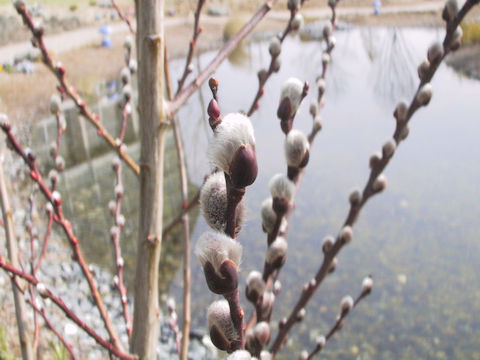 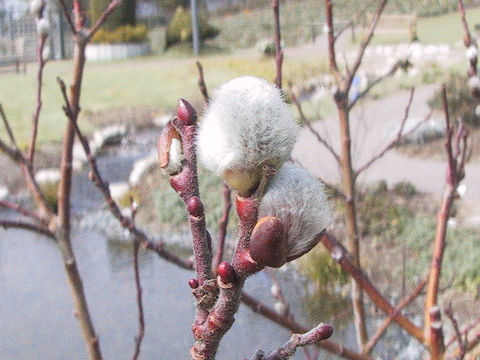 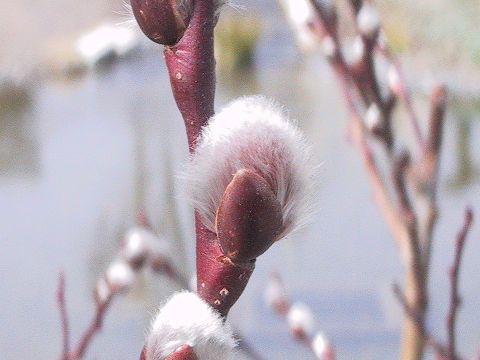 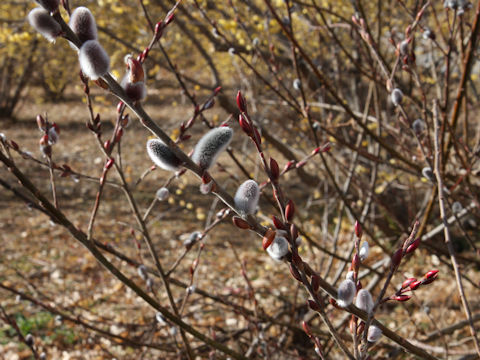 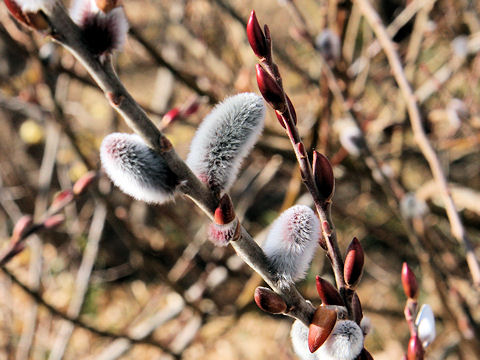 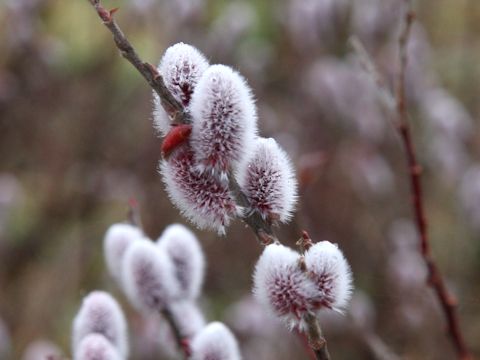 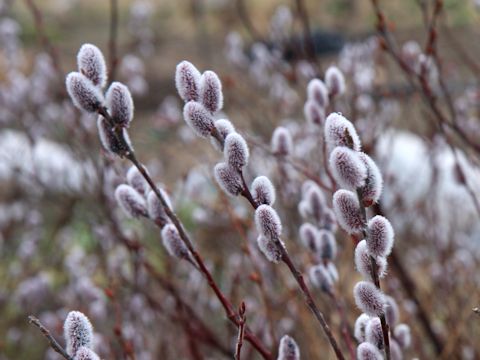 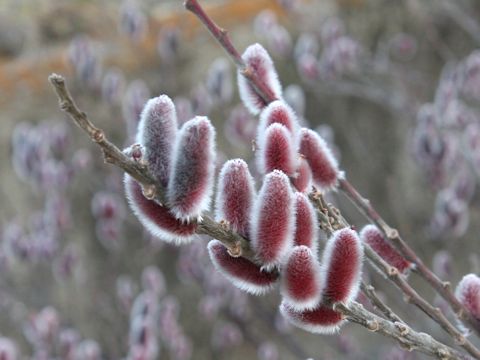 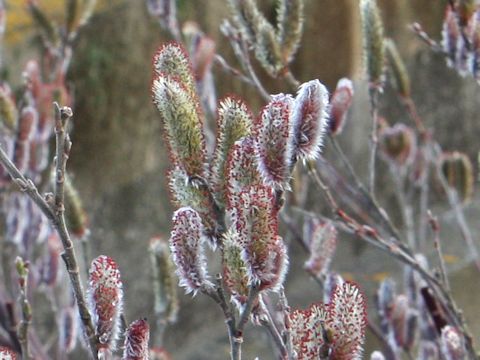 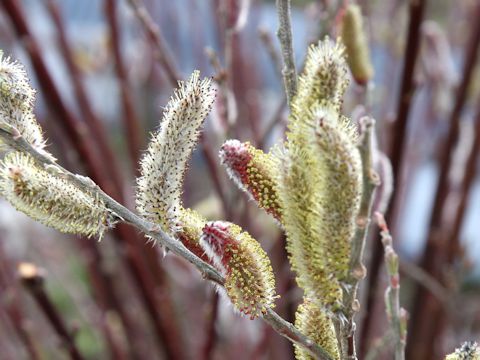 |
|
|
|
わが国の各地に分布しています。「ねこやなぎ(猫柳)」と「ばっこやなぎ(婆っこ柳)」との雑種です。高さは1〜5メートルになります。葉は長楕円形で厚く、裏面は白色の絹毛で被われます。2月から3月ごろ、葉に先立ち、大きな尾状花序をつけます。「ねきやなぎ」よりも冬芽が赤くて大きく、花序も一回り大きいのが特徴です。名前は、江戸時代の1657年、明暦の大火(振袖火事)の火元となった本郷丸山町の本妙寺、その境内で発見されたことによります。 |
|
|
ヤナギ科ヤナギ属の落葉低木で、学名は Salix x leucopithecia。英名はありません。 |
|
|
"Furisode-yanagi" (Salix x leucopithecia) belongs to Salicaceae (the Willow family). It is a small deciduous tree that is native to Japan. This willow is an interspecific hybrid between the rosegold pussy willow (Salix gracilistyla) and the "Bakko-yanagi" (Salix bakko). It can reach 1-5 m in height. The leaves are oblong, thick and the abaxial side is covered with white silky hairs. The large catkins are borne in February and March before foliation. It is characterised by the winter buds and catkins are redder and larger than the Rosegold pussy willow. The Japanese name is derived from the findspot; the Honmyo Temple that was in Edo's Hongo district, and was an outbreak of The Great Fire of Meireki (also known as the Furisode Fire) in the early days of Edo Era (about 360 years ago). |
|
|
[上・中1〜2] 名古屋市港区「ブルーボネット」にて、2003年03月16日撮影。 [中3・中4] 群馬県安中市松井田町にて、2009年01月24日撮影。 [中5・中6] 千葉県香取市久保にて、2011年02月24日撮影。 [中7] 同上にて、2012年02月28日撮影。 [中8] 同上にて、2012年03月19日撮影。 [下] 同上にて、2012年03月22日撮影。 |
|
|
|
Shu Suehiro |